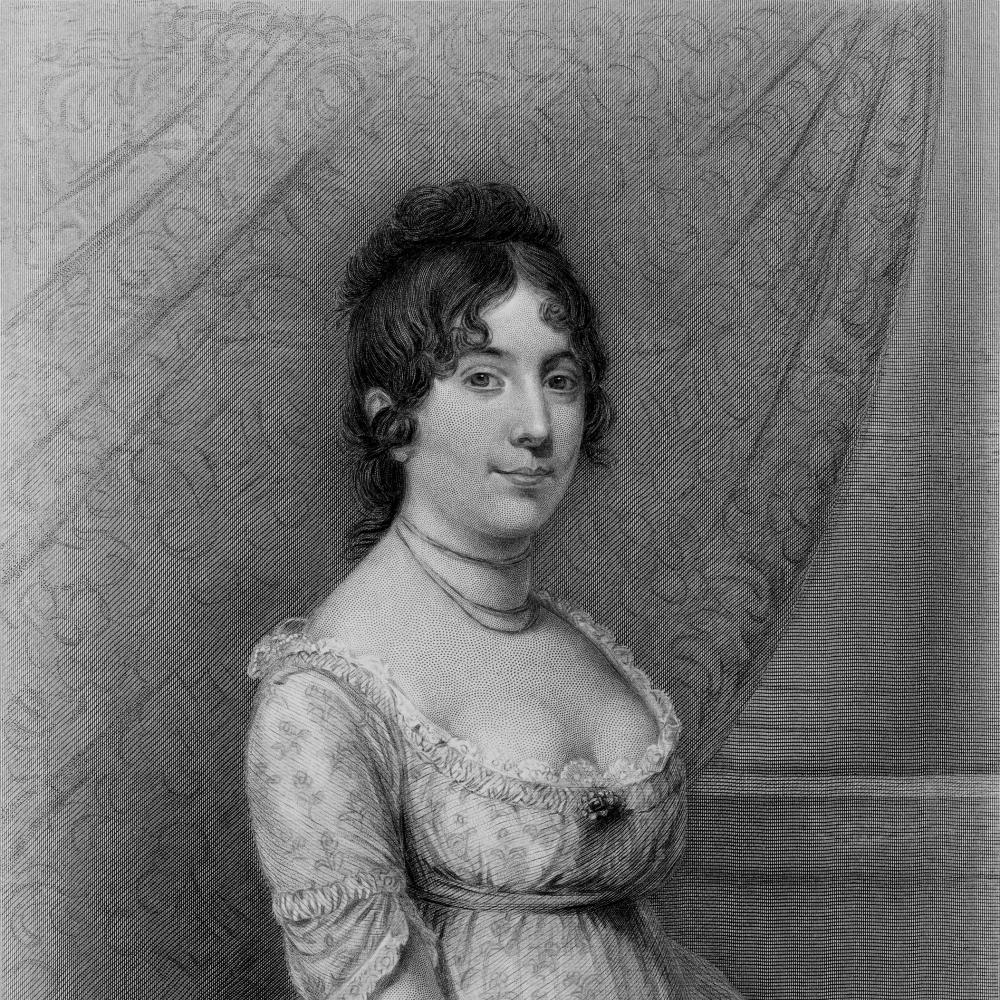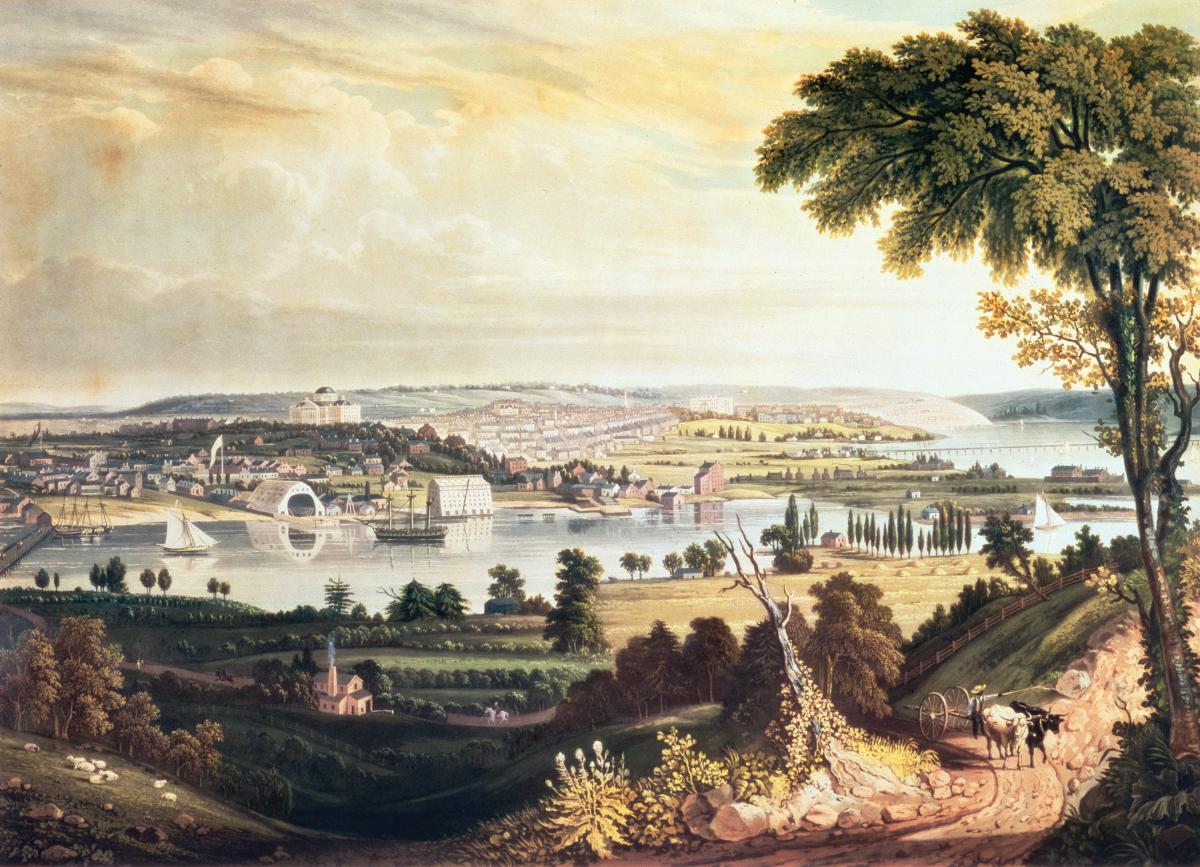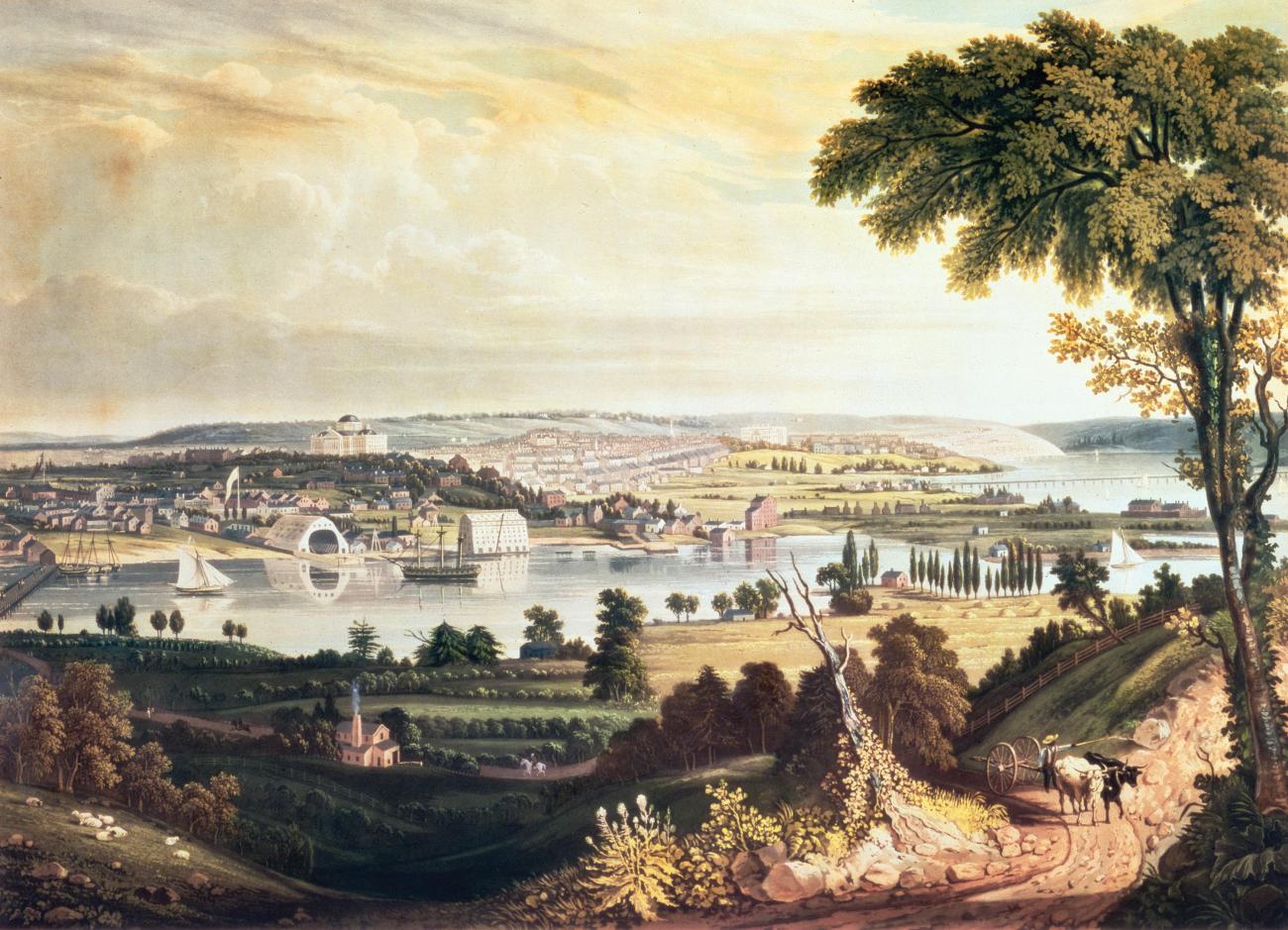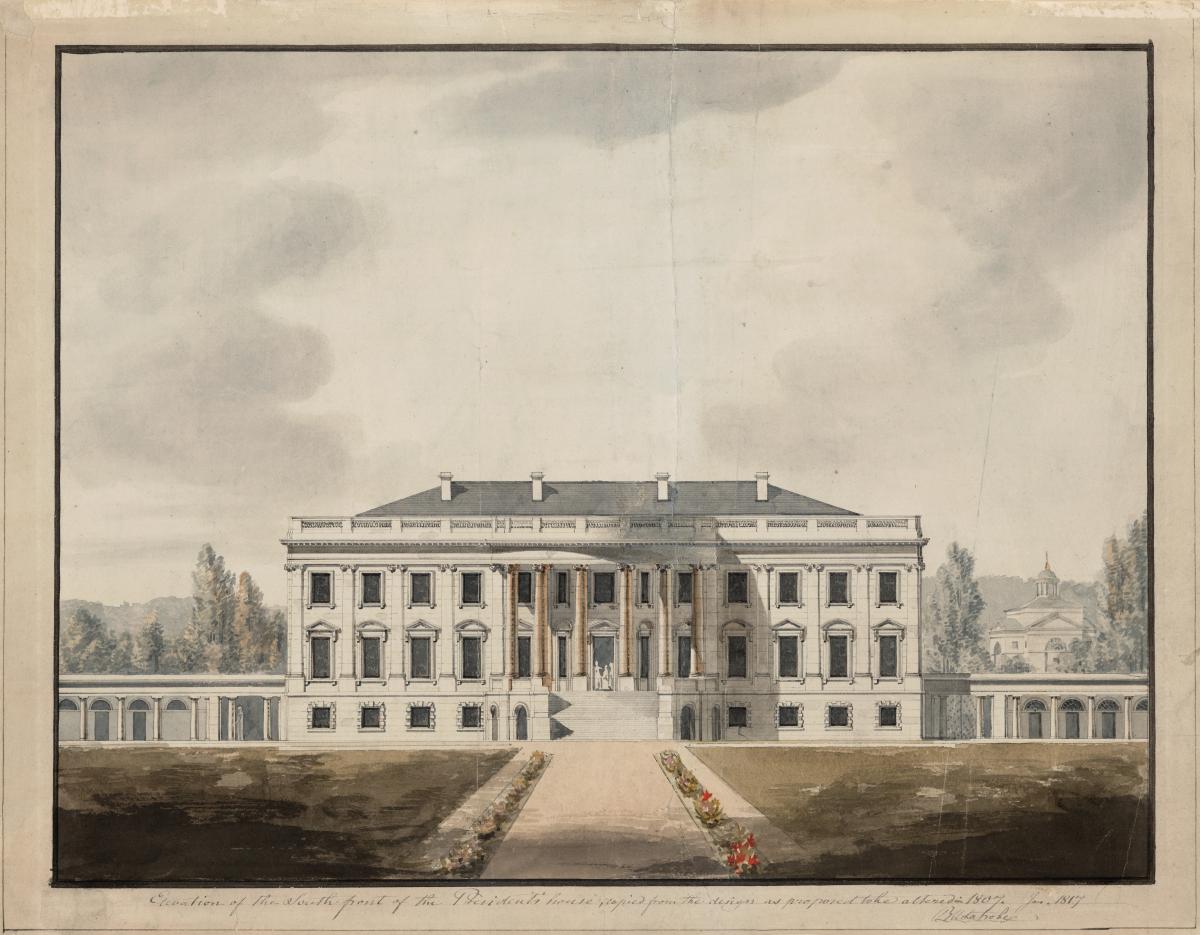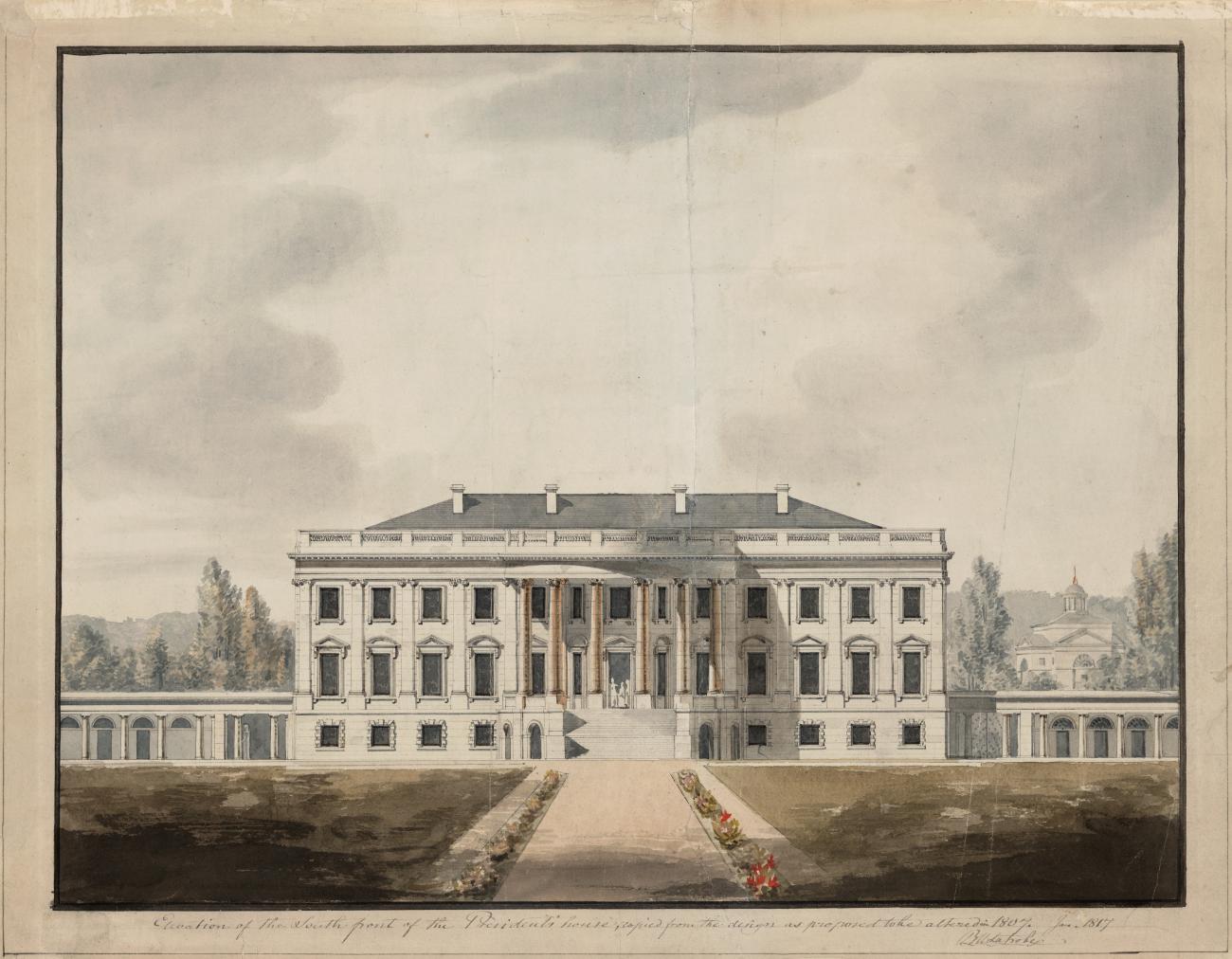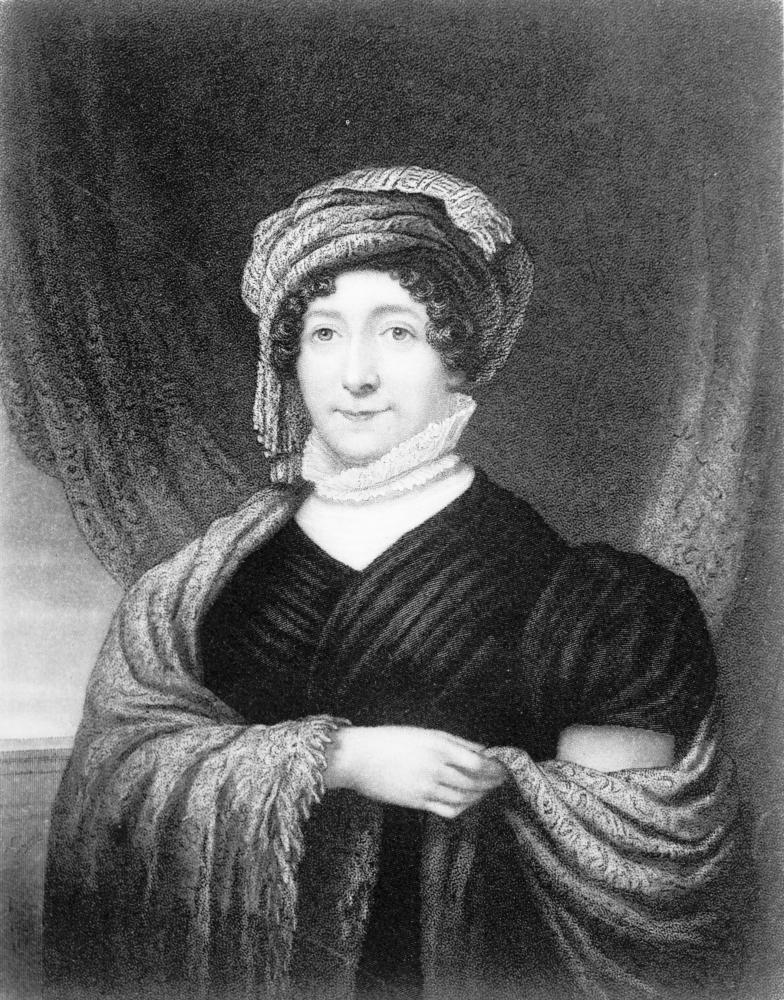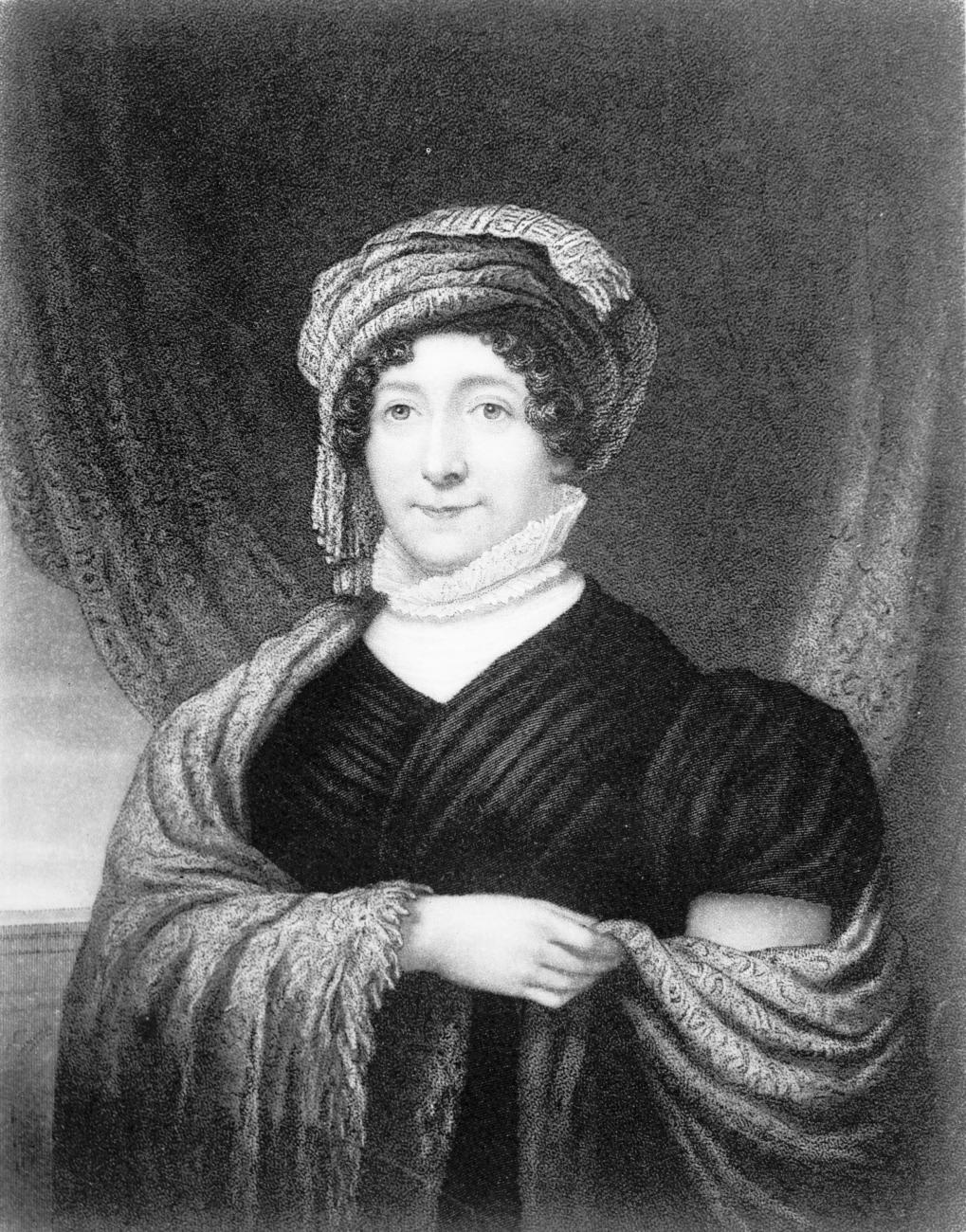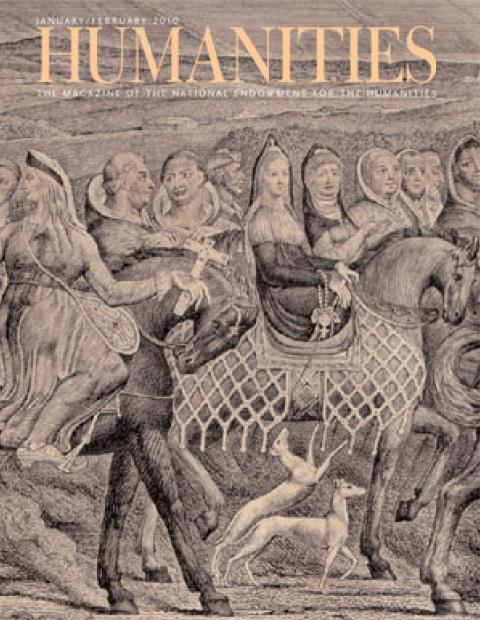The light rain that fell early in the morning of July 4, 1848, lasted only long enough to settle the dust on the roads of Washington City and give the summer day “a delicious freshness.” The sun shone well in time for the ceremonial laying of the cornerstone of the Washington Monument. Lured by the spectacle, and by stagecoach and railroad fares reduced for the occasion, people streamed into the capital. Eventually, a crowd of almost twenty-thousand women, men, and children gathered to watch the parade and speeches. Official men, from legislators to firemen, marched toward an arch of “colored cotton, suitably embellished.” But every eye was on a single woman “in a conspicuous position,” dressed in black clothes from an earlier age. This was eighty-year-old Dolley Payne Todd Madison, widow of the late president, James Madison, and “the Queen” of Washington City.
Another venerable widow flanked Dolley, ninety-year-old Elizabeth Schuyler Hamilton, widowed since the duel that killed Alexander Hamilton forty-four years earlier. John Quincy Adams’s widow, Louisa Catherine Johnson Adams, had also been invited but was too sick to attend. Years before, the Monument Society had appointed the three women to direct a committee of ladies from all across the country to raise funds for the monument through fairs, fundraisers, and other solicitations.
The organizers’ desire to showcase Dolley and the other ladies was more than an acknowledgment of their hard work and participation, however. They occupied a place of honor because, for the organizers and spectators, Dolley and her friends were living history, representatives of revolutionary days. Indeed, the women were the only public figures left from the first years of the new nation.
In her heyday, Dolley had been the public face of her husband, James Madison, and his administration, and she continued to personify him on that sunny July day. Indeed, to the event’s featured speaker, Robert C. Winthrop, it almost seemed that James Madison, Alexander Hamilton, and John Quincy Adams were actually “present, visably present, in the venerated persons of those nearest and dearest to them in life.” In the vernacular of the day, as a widow, Dolley was the “relict” of James Madison. But on this day, and on many others, Dolley was more than that: She was a relict of the founding of the republic itself.
While for Elizabeth Schuyler Hamilton, the cornerstone ceremony was a rare moment of public visibility, for Dolley Madison, this was but one moment in a life lived in the public eye. For decades, she had been the most famous woman—the most famous person—in the new United States. Back when she was the president’s wife, Dolley had been an object of public scrutiny and discussion by Washingtonians, American tourists, European visitors, and foreign diplomats. Much of this attention was approving, some of it was not. Yet even the sometimes-vicious negative attention Dolley garnered shows how famous she was.
In an era when few men and no woman received such international renown, Dolley’s stature has puzzled historians and modern Americans (who associate her name with ice cream and a line of packaged pastries). In our time, reality stars can become “fame-ish” overnight; but the people of the nineteenth century bestowed fame on individuals—mostly male—who it felt had made significant contributions to history. Why did the residents of Washington City, the members of government and their families, and, indeed, all of America declare Dolley the nation’s “Queen”? What did they understand about Dolley Madison that we don’t?
Dolley and James Madison had come to Washington City in 1801, in order for James to serve as secretary of state for President Thomas Jefferson. Upon their arrival, Dolley set about making their house on F Street a social and political center, a task made easy (and necessary) by Jefferson’s refusal to open the executive mansion to the public or even other members of the government. When James ascended to the presidency, Dolley then became the social leader of the nation, and the public face of the administration. Her role as the visible half of the Madison partnership intensified when the United States entered the disastrous War of 1812.
Because she was a woman, and therefore considered above the fray (as no lady would think of meddling in politics), Dolley could appear to the American public and European observers as a larger-than-life embodiment of patriotism and nation. Her famous flight from the White House, and her psychologically adept rescue of the portrait of George Washington, became one of the few stories of triumph in a larger saga of wartime losses.
In 1817, Dolley and James retired in a blaze of glory to Montpelier, where they spent twenty years in retirement. After James’s death in 1836, Dolley returned to Washington City, where she resumed her place at the head of society. Amazingly, Dolley’s fame seemed to increase after James’s death. If she was a significant presence in the capital before, she now became a personage for the ages, not merely an individual, but an icon. Attired in clothes that hearkened back to her own White House days, Dolley exuded serenity and a sense of history.
The woman who had taken tea with George Washington, attended the 1845 inauguration of James Polk, and met with Zachary Taylor. Her final years, 1844–1849, were the time in which she performed her most symbolic acts and received her highest honors—sending the first personal telegraph message by a private citizen, accepting her own honorary seat in the House of Representatives, receiving a version of a medal commemorating the War of 1812, specially cast for her in silver, and, of course, overseeing the laying of the cornerstone of the Washington Monument. Dolley seemed even to transcend personhood in her symbolic value: An 1846 correspondent for the Boston Cultivator assured its readers that Dolley “may be justly regarded as one of [Virginia’s] monuments.” Dolley accepted all these tributes graciously, modestly describing it all “as a token of their remembrance, collectively and individually, of One who has gone before us.” The capitalized deity was, of course, James.
In 1849, only a year after the dedication ceremony, Dolley died at the age of eighty-one, and her funeral bore witness to her exalted status. Both houses of Congress adjourned to attend the procession, the largest one Washington City had yet seen, its sequence of events borrowed from the protocol governing state occasions. In a mournful echo of Dolley’s innumerable guest lists from her Washington City days, the funeral procession consisted of: “The Reverend Clergy; Attending Physicians; Pall Bearers; The Family; The President and Cabinet; the Diplomatic Corps; Members of the Senate and House of Representatives at present in Washington, and their officers; Judges of the Supreme Court and the Courts of the District and their officers; Officers of the Army and Navy; Mayor and Corporation of Washington; Citizens and Strangers.” Dolley had always brought people together, and this final occasion was no exception.
Dolley’s fame outlasted her life, as she became a marketing tool through the nineteenth and twentieth centuries. The vendors of glassware, ice cream, cigars, and many other products showed less interest in the real Dolley than in the association of her name and person with taste, beauty, sociability, and “Americanness.” The prominence of “Dolly Madison” as an advertising icon, however, only brings the question full circle. Why was she famous? Could Dolley Madison’s position as a hostess, an occupation that seems to belong to private life, to the frivolous, to the female, and thus to the powerless, really account for such public renown?
The NEH-funded documentary, Dolley Madison, which airs March 1 on PBS, shows Dolley as a powerful political player in her time and as a model for future power brokers. Beginning as the wife of the secretary of state and even more so as First Lady, Dolley cultivated the unofficial sphere of Washington City and the federal government. Her social sphere—as exemplified by her famous weekly Wednesday-night drawing rooms—supplied a federal government that was lamentably light on bureaucracy with a structure within which political tasks could be done.
Dolley is well known for “decorating” the White House, though it is more accurate to say that she restructured it. Before her White House, there was no one place in the city where all members of government, let alone their families and the local community, could meet. The early republic was a time of political violence, when men fought over politics, beating each other with canes and even dueling, not just in the streets, but also on the floors of Congress. In “Mrs. Madison’s drawing rooms,” legislators, officials, and their families could gather, and, under her watchful eye, the powerful learned to work together in bipartisan ways. In a political culture that had not yet officially become a two-party system with institutionalized parties, Dolley’s goal of bringing everyone into the room, making them behave, and interact as human beings with families, was not just nice, it was crucial.
Dolley availed herself of the drawing room’s opportunities as well, using the social circles that she had built to do practical politicking for her husband. She participated in the all-important business of diplomatic relations, intervening over and over again in confrontations between James Madison and various representatives of His Majesty’s Government. She used conversations, cake, wine, and her own brand of graciousness to reduce the heated discussions.
Dolley became one of the leading patronage players in American history, giving many prominent men, such as Nicholas Trist, the diplomat, their start in government service, while creating ties between her family and other powerful political clans. Her networks transcended regional and even party lines. As the pressure on the president to ask Congress for a declaration of war intensified, James struggled to keep the United States neutral. At the same time, Dolley kept all his options open with her widely known alliance with Henry Clay, a leading War Hawk.
She also promoted both city and mansion as symbols of national identity. Indeed, this was the era when Americans began identifying with the city and the “people’s house”—it was on Dolley’s watch that the executive mansion got its nickname. Dolley’s efforts in this arena became even more crucial after the British invaded the capital and set fire to the White House in 1814.
Dolley also invented a role for all future First Ladies as the “charismatic figure” for her husband’s administration. The lack of bureaucracy and established structure in the federal government meant that the new Americans focused on personalities for affirmation and reassurance. Right after the Revolution, they used George Washington; during the contentious early republic, Dolley took his place. Dolley used her own self, writ large, to create a Republican Queen around whom people could rally, a figure who radiated calm goodness. Her “Queen” dressed royally, or at least as most Americans imagined royalty would dress. Arrayed in pink satin and ermine, with waving ostrich plumes attached to her trademark turbans, Dolley ensured that she dominated any room. Her gorgeous dress, lavish entertainments, and sense of ease transmitted messages of legitimacy, stability, and reassurance to new Americans and Europeans alike.
While people praised Dolley for her ensembles and her entertainments, they regarded most highly what they called her “good heart.” She made people feel special, and everyone marveled at Dolley’s ability never to forget a name, a face, or a family pedigree. These qualities of empathy, warmth, and courteous consideration account for both her enduring fame and her historical legacy.
At one point, Speaker of the House Henry Clay teased Dolley, declaring, “Everybody loves Mrs. Madison,” to which she replied, “Mrs. Madison loves everybody.” Love was the secret behind her appeal. She had the ability to love, not as one would love an intimate or a family member, but in an abstract way, the “love thy neighbor” kind of love.
Make no mistake—Dolley was as fiercely partisan as any male politician. Her declaration, “I confess I do not admire contention in any form, either political or civil” is often cited as proof of her pacific nature. The second half of the statement reveals more—“I would rather fight with my hands than my tongue.” And fight she did, though hers was the arena of action, not words. Though Dolley strove for discretion in her letters, anger at her husband’s enemies sometimes broke through—“disaffection stalks around us,” she gloomily reported to her sister. During his presidency, James Madison was hampered by what Dolley called “a Capricious Senate,” whose objections she characterized to a friend as “allmost treason, my dear.” Still, she subsumed her feelings, so that one guest declared, “By her deportment in her own house you cannot discover who is her husband’s friends or foes.”
Dolley became so adept that she could sit through the most vicious diatribes. One of her true “foes,” Congressman John Randolph of Roanoke, Virginia, had long been one of James Madison’s nastiest opponents, stooping so low as to spread sexual rumors about Dolley and her sisters. In 1809, Dolley’s presence in the House Gallery did not stop Randolph from launching yet another attack. As everyone watched for her reaction, Dolley did not disappoint. Her reply, “It was as good as a play,” at once reduced and diffused Randolph’s comments to a frivolous fiction.
But Dolley went beyond merely concealing her anger. Intellectually she knew that the salvation of the system would be people working together. Emotionally she possessed the generosity of spirit to reach out and truly embrace others. This capacity might be traced to her Quaker background; for members of the Society of Friends, all human beings possess the divine fire of God and should be treated accordingly. If so, she made ironic use of this otherworldly idea, employing it for political purposes. Whatever the cause, her public manner made her seem as though, according to one admirer, “she could disarm envy itself.” According to observers, no matter “how great a person greeted her or how comparatively unimportant a guest, her perfect dignity and her gently gracious interest were the same to all.” Dolley’s niece put more simply the secret behind her aunt’s success: “You like yourself more when you are with her.”
All of these qualities were genuinely Dolley’s. But in her playful use of the third person in her reply to Henry Clay—“Mrs. Madison loves everybody”—she unwittingly acknowledged the constructed nature of her persona. Dolley Madison could at once exhibit spontaneous warmth, making each guest feel like the only one in the room, while also adhering to the epigram found in her papers, one that demonstrates a detached political savvy: “Be always on your guard that you become not the slave of the public nor the martyr to your friends.” In her ability consciously to create and implement a public self deeply rooted in her authentic self, Dolley was a genius, an artist. She transformed personality into policy. On the most obvious level, she used her inner gifts in order to attach people to her, and by extension, to her husband and his politics. But it was more than that.
American revolutionaries had had a vocabulary for revolution, one with a long history that went back to Machiavelli, full of well-grounded concepts that all participants more or less understood. Dolley’s generation had no such shared language for the practical task of governing the nation and for the political system that they were developing—which eventually would become a powerful nation-state, ruled by a two-party democracy. In her words and deeds, the way that she behaved and treated people at her parties, Dolley brought a new language to the table of early American politics, a feminine vernacular of sentiment and feeling, with an insistence on civility.
As a person who pleased, Dolley was highly attuned to people and their needs and desires. All of James’s political goals for the country involved unity—within parties, between parties, and for the union itself. She put her knowledge and passions to the service of his ideals. Dolley brought love and empathy into political discourse and in doing so, she modeled for us a political behavior that allowed the participants to see each other as full human beings, rather than caricatures of evil. Her model of bipartisan process—one that emphasized cooperation over coercion, that built bridges instead of bunkers, with an emphasis on civility and empathy—proved necessary for building a modern, democratic nation-state. The men of her day could not envision bipartisanship; they did not even have a word for it. For them, politics was an all-or-nothing, zero-sum activity, where men regularly fought and murdered each other over ideologies. That Dolley could envision a politics of cooperation and power-sharing marks her as the most modern politician of her time. Because her culture had no place for, or way of understanding, a powerful political woman, they could not call her what she was—a stateswoman. Instead, advertisers and others took on her luster and focused on her personality separate from politics.
This model is her lasting gift to the nation. The canard is that women are too “emotional” for politics, but politics is always driven by emotion. It is just that for most of human history, it has been dominated by emotions such as anger, desire for revenge, and other such violent manifestations of humanity. As we modern Americans move into a new era of politics, we have the power to choose another set of emotions by which we rule. And if we listen to Dolley, we’ll choose love.

